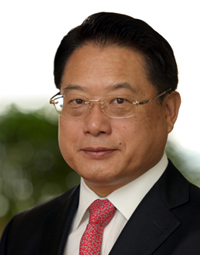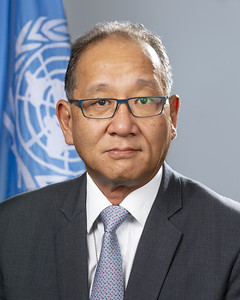Going Full Circle for Growth and the Planet
Oct 05 (IPS) - LI Yong is Director General of the United Nations Industrial Development Organization (UNIDO)
Hongjoo Hahm is Officer-in-Charge of the United Nations Economic and Social Commission for Asia and the Pacific (ESCAP) The business case for making our economy more sustainable is clear. Globally, transitioning to a circular economy - where materials are reused, re-manufactured or recycled-could significantly reduce carbon emissions and deliver over US$1 trillion in material cost savings by 2025.(1) The benefits for Asia and the Pacific would be huge. But to make this happen, the region needs to reconcile its need for economic growth with its ambition for sustainable business.

These imperatives underpin the 5th Green Industry Conference held in Bangkok this week, hosted by the United Nations Industrial Development Organization (UNIDO) in partnership with the United Nations Economic and Social Commission for Asia and the Pacific (ESCAP) and the Royal Thai government. High-level policymakers, captains of industry and scientists gathered to discuss solutions on how to engineer waste and pollution out of our economy, keep products and materials in use for longer and regenerate the natural system in which we live.
The goal is to embed sustainability into industries which we depend on for our jobs, prosperity and well-being. Action in Asia and the Pacific could make a major difference. Sixty percent of the world's fastmoving consumer goods are manufactured in the region. Five Asia-Pacific countries account for over half of the plastic in the world's oceans. The region's material footprint per unit of Gross Domestic Product is twice the world average and the amount of solid waste generated by Asian cities is expected to double by 2025.

With these goals in mind, the United Nations is working with governments and businesses to support innovation and upgrade production technologies to use less materials, energy and water. UNIDO is engaged across industrial sectors, from food production to textiles, from automotive to construction. Over the past twenty-five years, its network of Resource Efficient and Cleaner Production Centres has helped thousands of businesses to "green" their processes and their products. The Global Cleantech initiative has supported entrepreneurs to produce greener building materials. Industrial renewable energy use is being accelerated by the Global Network of Sustainable Energy Centres. New business models such as chemical leasing help reduce chemical emissions. And the creation of eco-industrial parks has contributed to the sustainable development of our towns and cities.
In Asia and the Pacific, the UN is intensifying its efforts to reducing and banning single use plastics. The Platform for Accelerating the Circular Economy is implementing programmes to reduce plastics consumption, marine litter and electronics waste, and encourage sustainable procurement practices. UNESCAP is identifying opportunities in Asian cities to return plastic resources into the production cycle by linking waste pickers in the informal economy with local authorities to recover plastic waste and reduce pollution.
The 5t h Green Industry Conference is an opportunity to give scale to these efforts. The gap between our ambition for sustainability and many business practices is significant. So it's essential for best practice to be shared, common approaches coordinated, and success stories replicated. We need to learn from each other's businesses to innovate, sharpen our rules and increase consumer awareness. Let's step up our efforts to build a circular economy in Asia and the Pacific. (1) World Economic Forum, Towards the Circula r Economy. Available from http://www3.weforum.org/docs/WEF_ENV_TowardsCircularEconomy_Report _2014.pdf
© Inter Press Service (2018) — All Rights ReservedOriginal source: Inter Press Service
 Global Issues
Global Issues